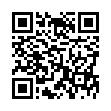Option-Click AirPort Menu for Network Details
If you hold down the Option key while clicking the AirPort menu in Mac OS X 10.5 Leopard, you'll see not just the names of nearby Wi-Fi networks, but additional details about the selected network. Details include the MAC address of the network, the channel used by the base station, the signal strength (a negative number; the closer to zero it is, the stronger the signal), and the transmit rate in megabits per second showing actual network throughput. If you hover the cursor over the name of a network to which you're not connected, a little yellow pop-up shows the signal strength and type of encryption.
Written by
Adam C. Engst
Recent TidBITS Talk Discussions
- Alternatives to MobileMe for syncing calendars between iPad/Mac (1 message)
- Free anti-virus for the Mac (20 messages)
- iTunes 10 syncing iPod Touch 4.1 (2 messages)
- Thoughts about Ping (16 messages)
Here Comes the Sun
The operating systems wars have become harder to keep track of than who hates whom in the Middle East and Central America combined. On the low end, Novell bought Digital Research and its version of DOS, called DR DOS (which was just updated). Microsoft will of course have to update MS-DOS to version 6.0 soon to keep up on that front, especially since IBM, through its agreement with Novell, can include DR DOS with the PS/2. On the high end, the ACE Consortium announced that they were going to have the next generation operating systems with Windows NT and SCO Unix. Not to be outdone, Apple and IBM formed a joint company to produce a separate operating environment based on the years of work Apple has put into the Pink OS. Confused? Good, scorecards are available at the door.
The latest entry into the ring (I think we're well past fisticuffs now and are entering the domain of tag team professional wrestling) is Sun, the number one maker of workstations. In a clever marketing move, Sun (or actually SunSoft, the software branch of the company) renamed and renumbered its current operating system, turning into Solaris 1.0 in one fell swoop. That's a pretty good move on its own, making Solaris seem like a hot new product when in reality it's the same old SunOS. However, the true marketing coup came when SunSoft announced that Solaris 2.0 would run on the 80386 and higher as well, thus providing high end PCs with a full-blown Unix operating system.
Compatibility with DOS, and possibly Windows, will come with Solaris 2.0, but SunSoft isn't really aiming Solaris at the small user. We've heard that Solaris will be one of the easier versions of Unix to manage and it does have the Open Look windowing interface, but it will still require some work to install and maintain, not to mention a good chunk of memory. Instead, the benefit lies with those people using high end machines on networks. Novell has announced that it will support Solaris 2.0, so Solaris should fit right into all those NetWare environments without too much trouble. Perhaps the most interesting aspect of Sun's move is that Solaris will probably be the first of the major operating systems to appear, sometime in the middle of 1992. I don't know if it will please the object-oriented people quite as much as something like Pink, but Solaris will be here soon and will run on Sun's SPARC machines as well as the high end PCs. High-end Macs are out for now, although they can hook to a NetWare network if present.
Information from:
Pythaeus
Sun propaganda
Related articles:
PC WEEK -- 09-Sep-91, Vol. 8, #36, pg. 1
PC WEEK -- 02-Sep-91, Vol. 8, #35, pg. 1
Communications Week -- 09-Sep-91, #368, pg. 1
 Get more productive with software from Smile: PDFpen for
Get more productive with software from Smile: PDFpen forediting PDFs; TextExpander for saving time and keystrokes while you
type; DiscLabel for designing CD/DVD labels and inserts. Free demos,
fast and friendly customer support. <http://www.smilesoftware.com/>

